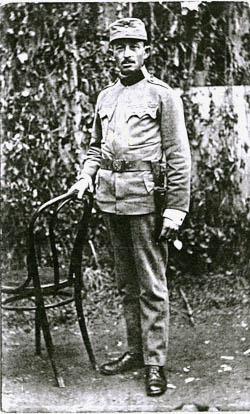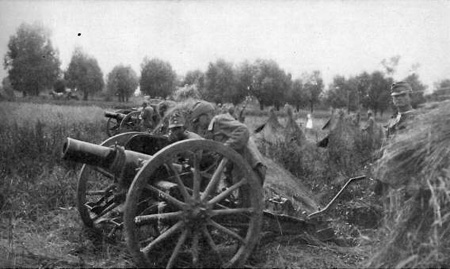scenes
from a forgotten front of the Great War
|
Although the most enduring image of the First World War has been shaped by the experience of trench warfare in the West, the Eastern front was frightful in its own right. It was the scene of the only two classic "victories" of the War: Hindenburg's encirclement of the Russians at Tannenberg, in the north, and the Brusilov Offensive against the Austrians in the south, which cost a million casualties on each side. Russia suffered the largest number of casualties in the War: 9.15 million, or 76 percent. Austria-Hungary had the highest relative losses: ninety percent of its 7.8 million troops were killed or wounded. |
 |
Austrian soldier at Großwardein (Nagy-Varád), Transylvania, 1915: A portrait postcard serving as a birthday greeting to his infant daughter. The family had been forced to flee the Russian invasion of the Bukovina, whose capital would change hands fifteen times in the course of the conflict. |
||
| (Even the place names reflect the complexity of the situation in the multiethnic Habsburg Empire. The Hungarian town of Nagy-Varád was built on the site of an ancient Roman settlement, destroyed by Tatars in the thirteenth century, rebuilt in the fourteenth century, and occupied by Turks in the latter part of the seventeenth century, before becoming part of the Habsburg Empire. Since the end of the First World War, it has been Romanian Oradea.) | ||
 |
||
| Austrian
field artillery in Poland (The World War I Document Archive) |
|
|
last
updated
20 August, 2002
|